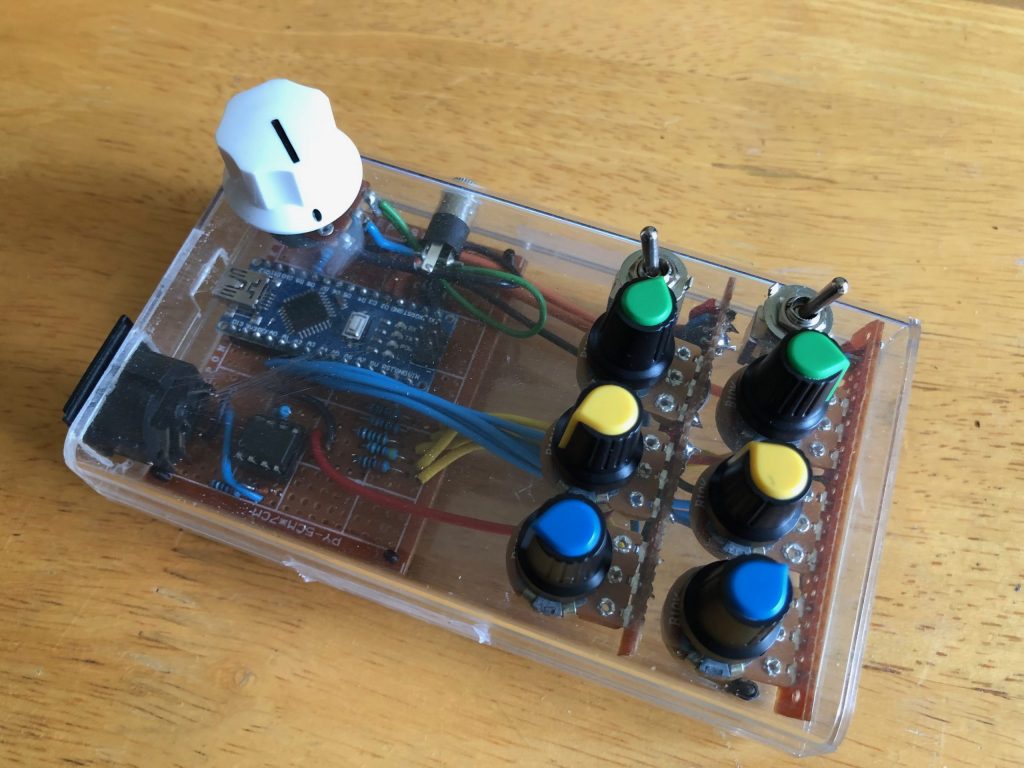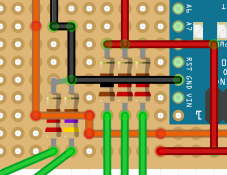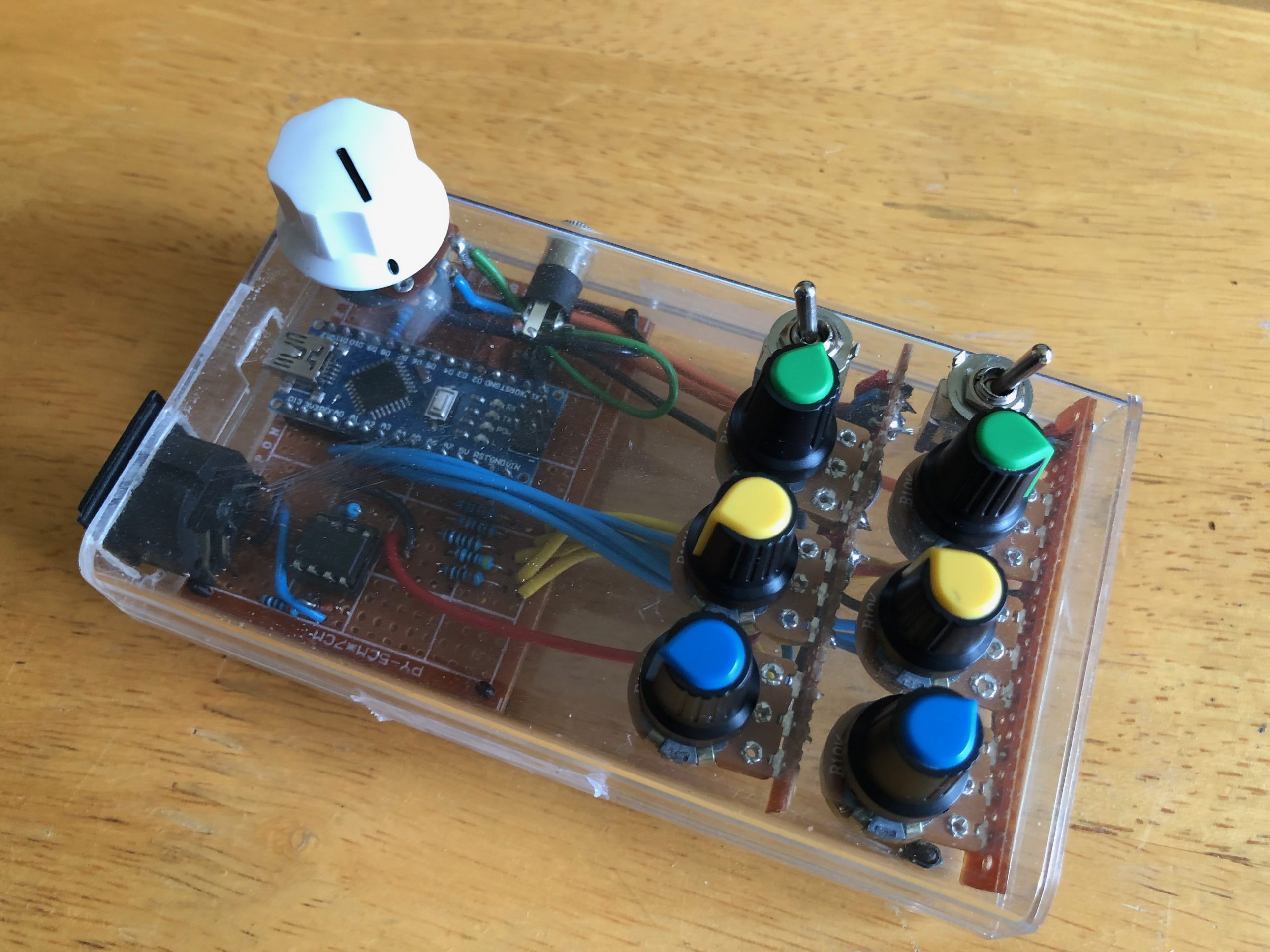The idea of building a DIY synth is certainly not new, I’m sure you can easily find projects in magazines going back 50 years or so, but it required good familiarity with discrete components.
While that really hasn’t changed all that much, we now have some shortcuts – like having a small and easy to use microcontroller like Arduino to take the place of dozens of other components. Thankfully a lot of work has been done with the amazing Mozzi library.
One project that puts the pieces together is the Helios One. This is a great and very detailed guide for putting together a simple monophonic synth. Not only kinda fun to build, but it sounds really cool. Also, the construction is actually quite generic – and with some software changes could be a totally different synth within the capabilities of Mozzi and the hardware.
So, I did it.

I discovered and leaned a few things when building.
- Yes you will wire the MIDI jack backwards. Check as many times as you want, you’ll see I’m right.
- A clear box is cool but wow a lot of extra fuss to keep things neat.
I also made a few changes when building.
I didn’t want the resistors to be directly attached to the pots. I had board mounted pots, so it would be only held on only by the solder, instead of a bit of mechanical attachment in twisting around the “loop†of a normal pot. Also, there was a lot of room on the board, so I thought it would be a bit tidier to do it that way. It ended up looking something like this:

- It seems like the volume pot is too big of a value, I replaced it with a A100K and it seems to work better, less of an extreme jump at the end.
- Instead of another switch for programming, I used a jumper from an old CD drive and a couple of header pins. I won’t be programming this all that often, and when I do I don’t mind pulling the jumper out.
- I changed the code a little…
- I decided to use the newest Mozzi library, so I combined the (now deprecated) individual functions for cutoff and resonance into the new combo function.
- I also changed the return value of the audio output method, as per the documentation.
- The above two were not strictly necessary, but might prevent some issues later down the line as the library matures.
I have since backed out to the older syntax. I can’t seem to get the resonance to sound like it’s changing anything. The frequency – oh yeah. Resonance… maybe?
- I did also adjust the range of the resonance and LFO rate pots. The resonance as above, and the LFO rate range was too wide (too slow and much too fast). I brought it down to allow the lower and higher rates for my taste and then added a little more. This makes the pot a little less touchy and I can get the rate I want easier.
- A nice side-effect of the low end being super slow is that it seems to “freeze†the band pass notch filter when turned all the way down. I can get some cool extra tones out of it that I would have expected from the resonance control.
What a great project! Even a basic mono synth can sound REALLY cool, and knowing you made it yourself makes it that much more awesome to hear.

Leave a Reply
You must be logged in to post a comment.